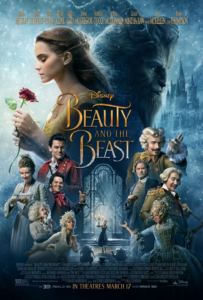 Starring: Jean Dujardin, Berenice Bejo and John Goodman
Starring: Jean Dujardin, Berenice Bejo and John Goodman
Directed by: Michel Hazanavicius
Rated: PG 13
Running time: 1 hour 47 minutes
The Weinstein Company
Our Score: 5 out 5 stars
What a great time early Hollywood must have been like. Then you could turn up at any film studio, get work as an extra and, if you caught the right eye, build a career. It’s 1928 and the reigning king of the movies is George Valentin (Dujardin). We meet him at the premiere of his latest adventure film, a spy film that features George and his trusty sidekick, known to fans as the Dog (Uggie). While mingling with fans afterwards, he poses for a photograph with a female fan (Bejo) who takes the opportunity to give him a peck on the cheek as the cameras flash. The next day the trade papers run the photo on the front page. The photo does not make George’s wife, Doris (Penelope Ann Miller) happy. Of course, as someone who sits about the house reading fan magazines just so she can deface any photo of George she comes across, nothing much does. It also angers studio head Al Zimmer, who blames the photo for pushing the release of the new film to page 5. Yet soon the lives of the star, the fan and the mogul will merge into one of the most original films of this decade.
A nominee for the Palme d’Or at the Cannes Film Festival, where Dujardin was named Best Actor, “The Artist” is a beautifully photographed story about accepting change even when it frightens you. George is not impressed with the new miracle of talking pictures. He decides he will write and direct his own film, using the skills he’s honed as an actor to tell the story without sound. His studio, however, disagrees. They’ve cast their newest up and coming star, Peppy Miller (the one time photographed fan/film extra), in a talkie. While doing a radio interview Peppy disdains the actors of silent Hollywood, dismissing their acting as “mugging for the camera.” This upsets George, who learns that his film will open the same day as Peppy’s. As George leaves the mostly empty theatre showing his film he finds himself caught in a mob of people. He realizes they are all crowded in front of the theatre playing Peppy’s movie. The public has spoken. But George will not.
In 1981 I had the great fortune to attend a screening of Abel Gance’s silent classic “Napoleon,” accompanied by a full orchestra. It was there that I learned that film is, first and foremost, a visual art form. Minutes could go by without a title card and you never lost a beat in the story. The same is true with “The Artist.” As George and Peppy begin to kindle a relationship their eyes and body language tell a story that words can’t begin to do justice to. The cast is brilliant. Dujardin is sure to earn an Academy Award nomination for his work here and, if he wins, he would be only the second Best Actor winner to win for a silent film role. Ironically the first winner, Emil Jennings, saw his career in Hollywood fade after the invention of talking pictures due to his heavy German accent. Bejo matches Dujardin scene for scene, giving the film an “A Star is Born” feel. Other notable performances are delivered by Goodman, Miller, James Cromwell and Malcolm McDowell. The film is beautifully photographed and the original score, by composer Ludovic Bource, is the perfect accompaniment.


Much ado about nothing. The much touted “The Artist” is Harvey Weinstein’s love letter to the studio system he only wished he could have been a part of. And while it is indeed meticulously crafted and cast, the content of it’s storyline (which I had hoped would be original in nature) is nothing more than a vague historical reference to the demise of John Gilbert’s career and the ascension of Greta Garbo’s. I guess it could have been worse it could have just been another tepid remake of “A Star is Born.” But the Gilbert/Garbo reference is apt, all the way down to one scene when Peppy (really? Peppy?) climbs into her car defiantly exclaiming: I want to be alone.